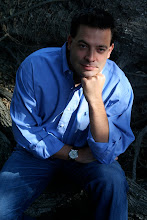
Last night I read an extremely compelling chapter of a book by Bernard Bailyn called, "To Begin the World Anew; The Genius and Ambiguities of the American Founders." While this book title sounds about as interesting, on it's face, as having sand paper dragged across your knuckles, Bailyn's thesis is incredibly profound. In essence, it is that the most important and culturally significant artists in history (as in the arts - painting, music, sculpture, writing, poetry, science, philosophy...etc) come from more rural places. More excitingly, even still, the most important cultural movements, the most significant achievements in intellectual renewal also do not come from city centers but from more countrified settings. He would go on to assert that the most prophetic voices in the history of civilization, as we know it, have emerged from provincial places, rather than metropolitan city centers.
As Christians, we of course know that the single most important voices in the history of faith and faith understanding in our own religious tradition have come from rural places; Isaiah, John the Baptist, Jeremiah, Abraham, Jacob, Micah, Nehemiah, Paul, all twelve disciples..not to mention - Jesus, hailed from the pastoral and wilderness settings of the Sinai Penninsula and the Holy Land. To Bailyn's point, these prophets (and God with us - Jesus) decidedly did not come from the popular cultural centers of the world at that time.
Here is Bailyn in his own words;
"In a brief but brilliant essay entitled "Provincialism," the art critic Kenneth Clark commented on the differences between metropolitan and provincial art. Through the centuries, he wrote, metropolitan art, emerging from the dominant centers of culture, has set the grand styles that have radiated out into the world, creating standards and forming assumptions that only idiots, Clark wrote, would challenge. But in time metropolitan art, for all its success - and in part because of them - becomes repetitive, overrefined, academic, self absorbed as it elaborates, polishes, and attenuates its initial accomplishments. And a kind of scholasticism sets in, while out on the margins, removed from the metropolitan centers, provincial art develops free of those excesses.
Artists on the periphery introduce simplicity and common sense to a style that has become too embellished, too sophisticated, too self-centered. The provincials are concrete in their visualization, committed to the ordinary facts of life as they know them rather than to an established style that has taken on a life of its own. And they have a visionary intensity, which at times attains a lyrical quality, as they celebrate the world around them...they are immersed in and stimulated by the ordinary reality around them; and they transcend their limited environments by the sheer intensity of their vision, which becomes, at the height of their powers, prophetic!"
Part of the reason I find this excerpt so exciting, is because all of the church call settings that I have always felt called to serve - have existed in rural, sub-rural, suburban, and collegiate suburban settings. More importantly, my greatest desire has always been to continually be a part of a religious movement that is new, that is is real, that is fresh in this world, and that strives in concrete ways for the world beyond:-)
All for now,
GB

No comments:
Post a Comment